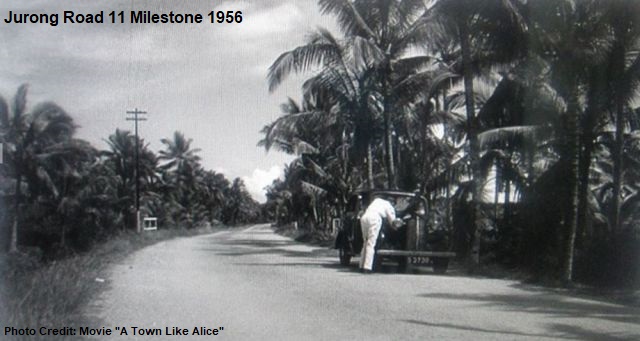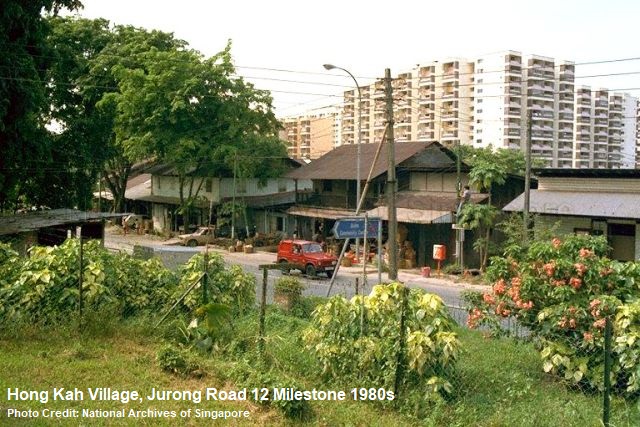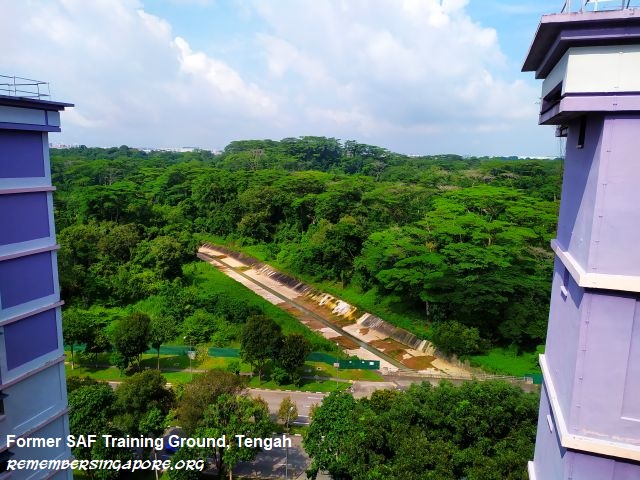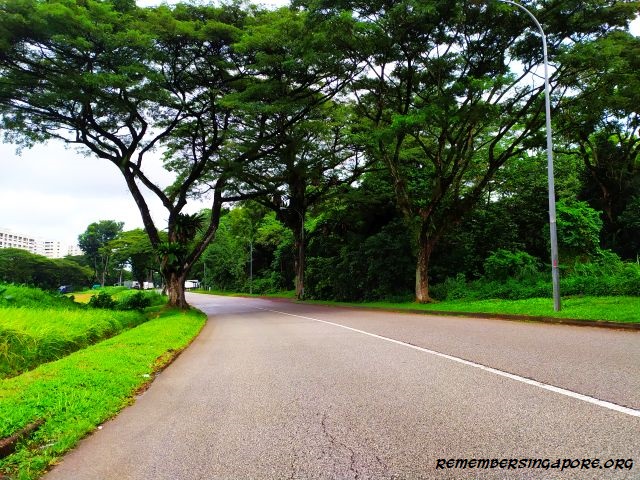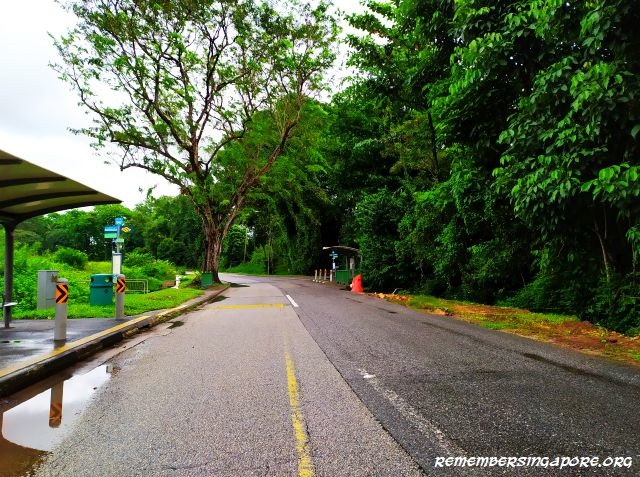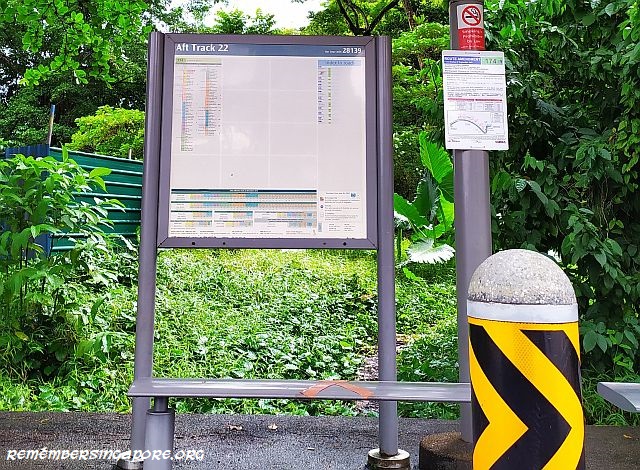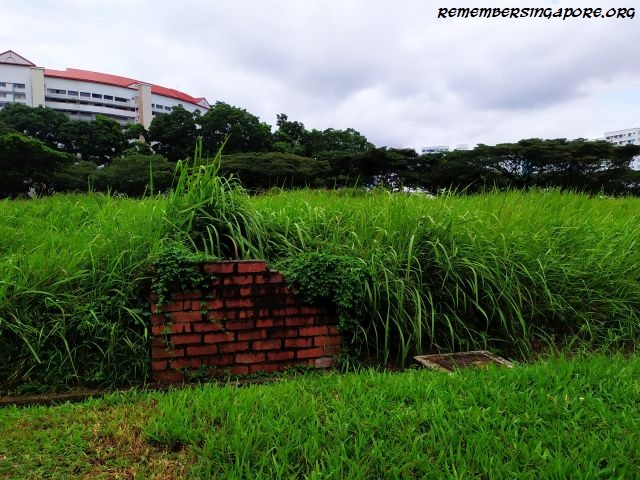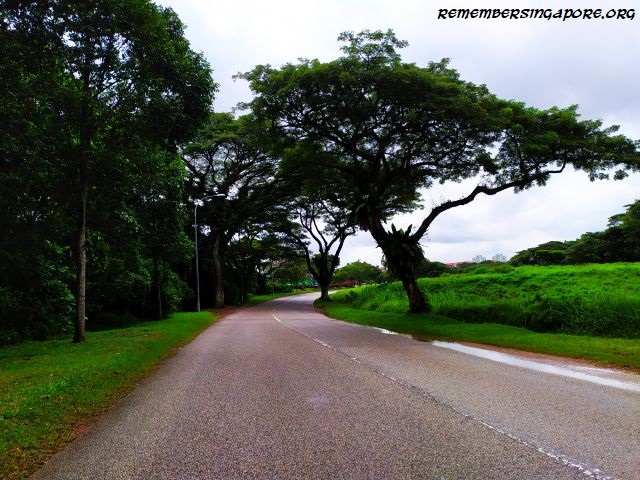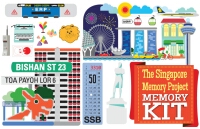As we bid farewell to longtime retail giant Robinsons, let us do a recap of those once-familiar Japanese, French, Hong Kong as well as local department stores that became defunct in Singapore (We will save the former supermarkets/hypermarkets for another day).
1. Robinsons (1858-2020)

Being in the business for a long 162 years, Robinsons began as a small shop at Raffles Place (formerly Commercial Square), named Spicier and Robinson. Its founders James Gaborian Spicer and Philip Robinson sold everything from European groceries, spices to women’s apparel.

In 1859, the business was renamed Robinsons and Company after James Spicer left the partnership. By the early 20th century, Robinsons had become the leading department store in Singapore, positioning itself as the upmarket store catering specially for the European expatriates.
In its history, Robinsons and its iconic department store at Raffles Place survived the Great Depression (it posted its first ever losses of about $233,000 in 1932), Second World War bombings, Japanese Occupation (it was closed between 1942 and 1945) and a disastrous fire in 1972 that killed nine people and destroyed million dollars’ worth of goods.

Robinsons picked itself up after the disaster, expanding to other parts of Singapore. It subsequently opened stores at the Specialist’s Shopping Centre (1972), Clifford Centre (1977-1983) and The Centrepoint (1983-2014). After the company was sold to the Al Futtaim Group, another three stores were opened – Raffles City (2001-2020), JEM (2013-2020) and The Heeren (2013-2020). But they were eventually closed in 2020 due to dwindling business, challenges from the eCommerce and the impact by the Covid-19 pandemic.
Memorable Slogan: “Robinsons Sale – The sale worth waiting for“
2. John Little (1842-2016)

Before Robinsons, John Little was Singapore’s oldest department store. It was started in 1842 when John Martin Little opened his shop at Raffles Place (formerly Commercial Square), selling wine, textile, furniture, stationery and clocks. In 1955, John Little was acquired by Robinsons.
John Little left his iconic Raffles Place store in the sixties, and over the years, went on to open stores at the downtown area, such as Plaza Singapura and Specialist’s Shopping Centre. It was revamped with a new logo “JL” in the late eighties in order to woo the younger crowds.

John Little reached out into the new towns and suburban area in the early 2000s, by opening outlets at Parkway Parade, Jurong Point, Northpoint and Compass Point. But by 2015, Robinsons’ new owner Al Futtaim Group decided to close all the John Little department stores in Singapore, with the last one at Plaza Singapura shuttered in November 2016.
3. Yaohan (1974-1997)

Japanese department store Yaohan entered the Singapore market in 1974 with its first branch at Plaza Singapura. Offering a wide range of merchandise, Yaohan also boasted a supermarket, bakery and even a child play centre, a fresh concept that attracted many shoppers in the seventies and eighties. Before Yaohan, Singaporeans had not have the chance to experience shopping, supermarket and takeaway snacks under one roof.
At its peak, Yaohan had stores at Katong (1977-1983), Thomson Plaza (1979-1998), Bukit Timah (1981-1996), Jurong (1983-1997) and Parkway Parade (1983-1997). But by the late eighties, it faced challenges from other Japanese department stores such as Daimaru. The new mega player Takashimaya, opened at Ngee Ann City in 1993, also influenced changes in the consumers’ shopping habits.


Yaohan opened its last store at Marina Square in 1996 in a bid to catch up with its rivals, yet a year later, its mother company in Japan was declared insolvent due to mounting losses. In Singapore, its flagship store at Plaza Singapura was closed in 1997. Thomson Yaohan, the last one standing, eventually shut down in 1998.
Memorable slogan: “For one-stop family shopping“
4. Daimaru (1983-2003)

Daimaru was another Japanese department chain that had been eyeing the Singapore market for a long time. It was during the Second World War when Daimaru set up its first department store in Malaya – opened in Penang in 1942. It had a brief presence in Singapore, replacing the ousted John Little at Raffles Place. During the sixties and seventies, Daimaru carried out market researches and surveys to establish a branch in Singapore.

Finally, in November 1983, Daimaru’s flagship store at Liang Court was opened. It enjoyed the best days throughout the eighties, warding off challenges from other large retailers such as Isetan, Metro, Robinsons and Tangs. But entering the late nineties, Damairu was suffering from consecutive years of losses.
Despite the tough times, Daimaru seemingly won the battle when they took over the space left behind by Yaohan at Plaza Singapura, as the latter had shut down in 1997 due to bankruptcy. However, Plaza Singapura’s Daimaru did not last for too long. It was opened for six years before its operations were ceased due to its Japanese headquarters’ decision to scale down on their overseas venture and concentrate in their main business back at home.
5. Sogo (1986-2000)

Sogo was another Japanese retail giant that had established a number of department stores in Singapore in the nineties. Back in Japan, it had a long history, starting off as a kimono shop in 1830. In the eighties and nineties, Sogo expanded to other Asian regions, such as Hong Kong, Taiwan, Malaysia, Indonesia and Singapore.
Sogo opened its flagship store at Raffles City in 1986, with Singapore’s Minister for Foreign Affairs Suppiah Dhanabalan (born 1937) invited as the guest of honour to officiate the opening. The company subsequently opened two more new stores at Paragon and Tampines’ DBS Building.

But in 2000, Sogo ran into real estate investment issues and landed itself in a mountain of debts. Several overseas stores had to be closed, including the ones at Singapore. The 14-year-old Sogo flagship store at Raffles City was replaced by Robinsons, whereas Metro took over Sogo’s former premises at Paragon.
6. Tokyu (1987-1998)

Tokyu joined other Japanese department chains in Singapore by opening its first store at Marina Square in October 1987, where former Finance Minister Dr Richard Hu (born 1926) officiated the opening.
Tokyu Department Store was designed to provide shoppers a “complete Japanese experience with the ingenuity of traditional Japanese-style customer services”. Tokyu positioned itself as a brand offering moderately-priced merchandise from Japan, Hong Kong and other sources. By the late eighties, besides the Singapore store, Tokyu had expanded to Hawaii, Bangkok and Hong Kong.


In 1993, Tokyu closed its Marina Square branch (1987-1993) and moved to Tampines (1993-1998). But by 1998, Tokyu had exited the local market as the group looked to restructure and liquidate their overseas assets due to hefty losses incurred during the 1997/98 recession. In 2014, Tokyu Hands, a sister store of the former Tokyu Department Store came to Singapore with a new lifestyle store opened at Westgate.
7. Seiyu (1998-2008)

Another Japanese brand was Seiyu, which was established in 1946. In Singapore, Seiyu appeared in 1994 as Seiyu Wing On Department Store, a joint venture with Hong Kong company Wing On. Seiyu then took over and became the main department stores at Bugis Junction, Junction 8 (Bishan) and Lot 1 (Choa Chu Kang) in 1998.

Singapore’s Seiyu stores were bought over by Beijing Hualian Group in 2005 for $4 million, and their stores renamed BHG. By 2016, BHG has owned seven department stores in Singapore, at locations such as Seletar Mall, Century Square Shopping Centre and Jurong Point. Meanwhile, the Seiyu Group back in Japan was fully acquired by Walmart in 2008.
8. Galeries Lafayette (1982-1996)

Upmarket French department store chain Galeries Lafayette has been finding successes in its business since it opened in 1912. However, that success was not replicated in Singapore. It had an official opening at Goldhill Plaza on 7 December 1982, occupying three storeys and offering many exquisite yet affordable items of Galeries Lafayette’s own brands.
However, the department store lasted only four years at Goldhill Plaza, before it had to shut down in 1986 after posting a total of $15 million’s worth of losses. Poor store location, image problems and merchandising difficulties were cited as the reasons behind its closure.

But Galeries Lafayette was determined to make a comeback in Singapore. On 28 March 1987, it reopened its store at Liat Towers, aiming to claim a stake in the fast growing Orchard Road shopping belt. It took over the space previously occupied by Isetan, which had moved to Wisma Atria.
But once again, stiff competition and leasing issues eventually saw Galeries Lafayette bowed out of the Singapore market again, this time in early 1996.

9. Printemps (1983-1989)

Galeries Lafayette was not the only French department store trying to penetrate the Singapore market. Printemps, a French department store that dealt with lifestyle, fashion and accessories, had a brief presence at Singapore’s Orchard Road in the eighties. The retail giant was founded in 1865, and went global in the eighties and nineties by opening stores in Japan, Korea, Malaysia, Taiwan as well as Singapore.
10. Lane Crawford (1994-1996)

Established Hong Kong retailer Lane Crawford has a significant history, dating back to 1850. It later expanded to China and Japan but was devastated by the Second World War. Lane Crawford quickly picked itself up after the war, becoming an upmarket department store that offered jewellery, fashion, furniture and watches.
In June 1994, Lane Crawford arrived at Singapore, with its store opened at Lane Crawford Place at Orchard Road. Former Minister for Information and The Arts George Yeo was the guest of honour for its official opening.

Singapore, however, was undergoing a retail slump in the mid-nineties. Lane Crawford itself was also bothered by internal issues, which saw some of its top management resigned in quick succession. In 1995, Lane Crawford slashed its store size from five floors to two.
Just slightly more than two years after its opening, Lane Crawford was closed in October 1996, incurring a loss of $7 million including a compensation to landlord Marco Polo Development for the early releasing of its four-year lease. Lane Crawford exited the Singapore market and Lane Crawford Place was subsequently renamed Wheelock Place.
11. Singapore Shui Hing (1980-1983)

Before Lane Crawford, Shui Hing had already attempted to break into the Singapore market. But it also suffered the same fate of having a short-lived presence here, lasting only three years. Shui Hing was started in Hong Kong in 1964, and had been successful, opening as many as 17 outlets in the former British colony by the end of the seventies.
 In Singapore, Shui Hing opened the first store at Orchard Road in August 1980, selling mainly American and European merchandise. It was designed in American style, in order to provide customers a feel of “shopping in New York”. The store consisted of four storeys, made up of sections selling fashion, kitchenware and household products. It also had a gourmet shop serving food and beverages.
In Singapore, Shui Hing opened the first store at Orchard Road in August 1980, selling mainly American and European merchandise. It was designed in American style, in order to provide customers a feel of “shopping in New York”. The store consisted of four storeys, made up of sections selling fashion, kitchenware and household products. It also had a gourmet shop serving food and beverages.
However, a year later, Shui Hing attempted to shed its pricey New York image. By mid-1983, the department store and its building were put up for sale at a price of $32 million. OG bought the building for $25 million, and Singapore Shui Hong officially walked into history in July 1983.
Memorable slogan: “It’s like shopping in New York”
12. Kmart Metro (1994-1996)
In 1994, Kmart collaborated with Metro to open three stores in Singapore, including the ones at Marina Square and Century Square (at Tampines). Positioning itself as a store offering great values, Kmart aimed to bring a whole new meaning to “discount shopping”.
But again, Singapore’s retail slump in the nineties put massive pressure on its three stores, which suffered a total loss of $12.6 million in 1995. A year later, Kmart’s main office in the United States decided to close more than 200 stores globally, including the Singapore outlets, to concentrate in its North and South American markets.
13. Cortina (1973-late 1980s)
Cortina Department Store was a prominent shopping venue housed at Colombo Court, North Bridge Road. Covering six floors, the department store sold everything from fashion, shoes, bags and perfumes to toys, wine and kitchenware. But the fortune of Cortina went into a decline in the early eighties. It was downsized in 1984 and moved to Funan Centre a year later.

Other local department stores of the past also included the Aurora Department Store (1938-1960s), located at the junction of North Bridge Road and High Street, and Vashi’s Department Store (1960s-1973), a department store at Raffles Place’s D’Almeida Street during the sixties. It was closed in September 1973.
Both were upmarket department stores catering to the masses living and working at the city area.

14. Emporium (1961-1987)

Emporium was a name once familiar to many Singaporeans. It was Singapore’s largest department chain in the early eighties before it was hit by the 1985 recession.

At its peak, the Emporium Holdings Group, established by Lim Tow Yong and his brother back in 1961, opened more than 50 department stores in Singapore, Malaysia and Hong Kong. Its iconic Emporium department stores could be found in almost all major new towns in Singapore in the early eighties.
Besides Emporium, the group also owned Oriental, Chinese, Eastern, Sin Hua and Yuyi, which specialised in a wide range of Chinese products in garments, textiles and food stuff. In 1978, Emporium Holdings Group opened its 12th retail outlet – Klasse Department Store – at Lucky Plaza.
Debt-laden in the mid-eighties due to the unexpected recession and the group’s overly aggressive expansion, Emporium eventually fell into bankruptcy and faded away among the larger department store chains in Singapore.
Memorable Slogan: “There’s an Emporium around every corner to serve you!“
15. Tah Chung Emporium (1967-1990s)

Located between Commonwealth Avenue and Margaret Drive, Tah Chung Emporium was opened in 1967, and had been Queenstown’s iconic landmark for more than two decades. It was housed in a three-storey building, with the first and third floor occupied by hawkers and a Chinese dim sum restaurant. The emporium had the entire second level to itself, selling household goods, kitchenware, apparel and electrical appliances.
In the seventies, Tah Chung Emporium also collaborated with the Emporium Holdings Group, Singapura Emporium (East Coast Road) and People’s Emporium (Tanjong Katong Road) to dish out a “combined emporiums sale”, offering discount vouchers, free gifts and other attractive sale gimmicks.

As Queenstown aged, Tah Chung Emporium went into a decline and was eventually closed in the late nineties, with its building torn down in 1999.
Other Emporiums
The name emporium was widely used between the sixties and eighties. Besides the larger department stores under Emporium Holdings Group and Tah Chung Emporium, there were many others such as Tashing Emporium (at People’s Park Complex), Overseas Emporium (People’s Park Complex), Great Wall Emporium (Maxwell Road), Shankar’s Emporium (High Street) and Neo Soon Whatt Emporium (Serangoon Gardens).

Tashing Co (Pte) Ltd started as a heavy machinery supplier in 1969. They also established Tashing Emporium, which offered products imported from Taiwan. Their emporium business went into decline and was shut down in 2002, but Tashing Co (Pte) Ltd has since switched to wholesale distribution in food products and is among the top 1,000 food distributing SMEs (small and medium enterprises) in Singapore today.
Overseas Emporium was established in 1970 at the People’s Park Complex. At that time, it was the largest Chinese emporium in Singapore, and its signature paper bags carrying its Chinese name (中桥) were commonly seen throughout the seventies. Operating under the OEGroup, the department store is still a popular destination among the locals today.
Shankar’s Emporium was founded in the fifties, and has been in business for more than 65 years. Its headquarters is based in Singapore and has business operations in the Middle East.
Meanwhile, Neo Soon Whatt Emporium was a small former department store at Serangoon Gardens in the late sixties, selling China and locally manufactured products.
Current Department Stores
Today, the major department stores in Singapore are Takashimaya, Isetan, OG, BHG, Tangs, Marks & Spencer (formerly St Michael, renamed in 1994) as well as Metro.
Published: 7 November 2020








































































